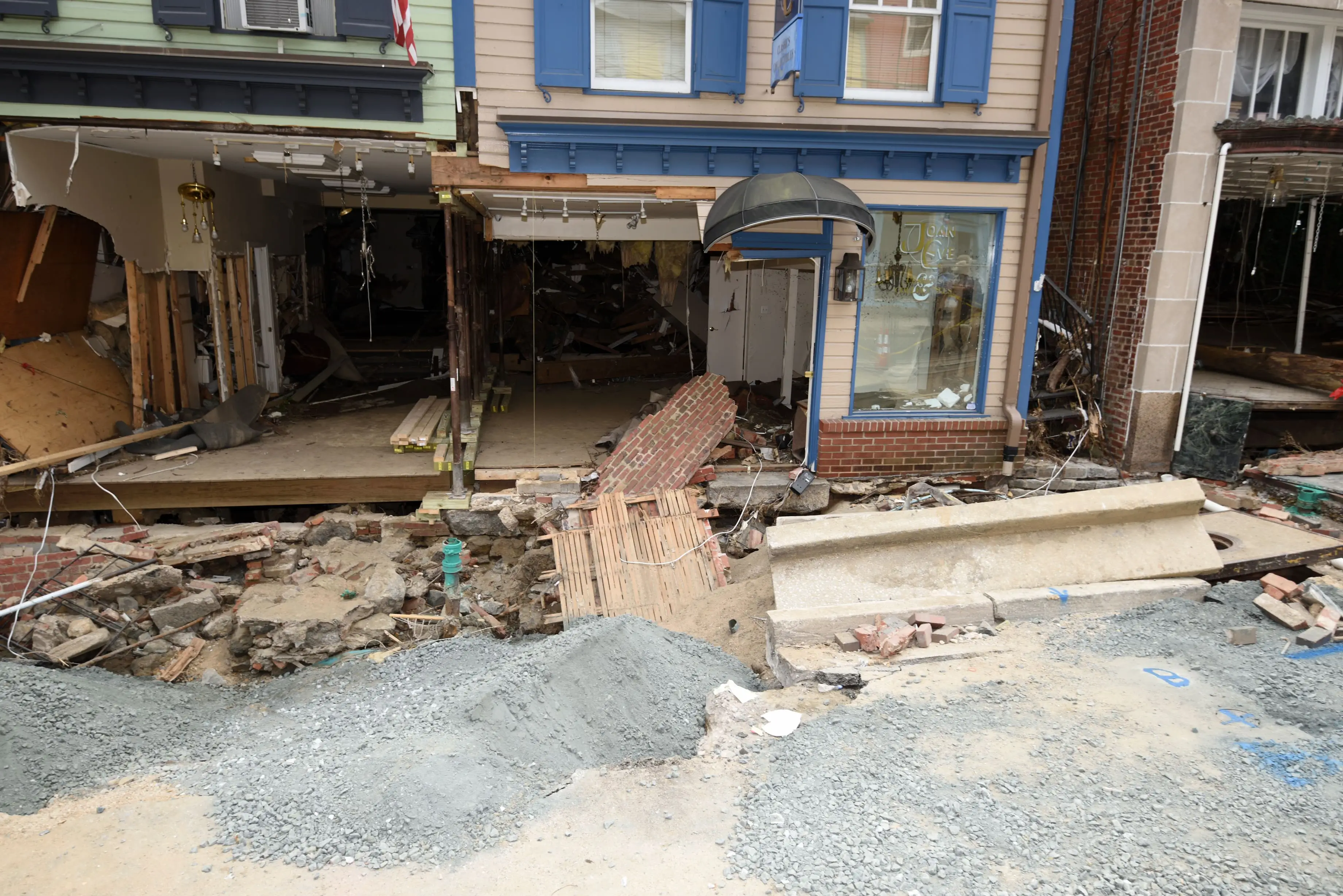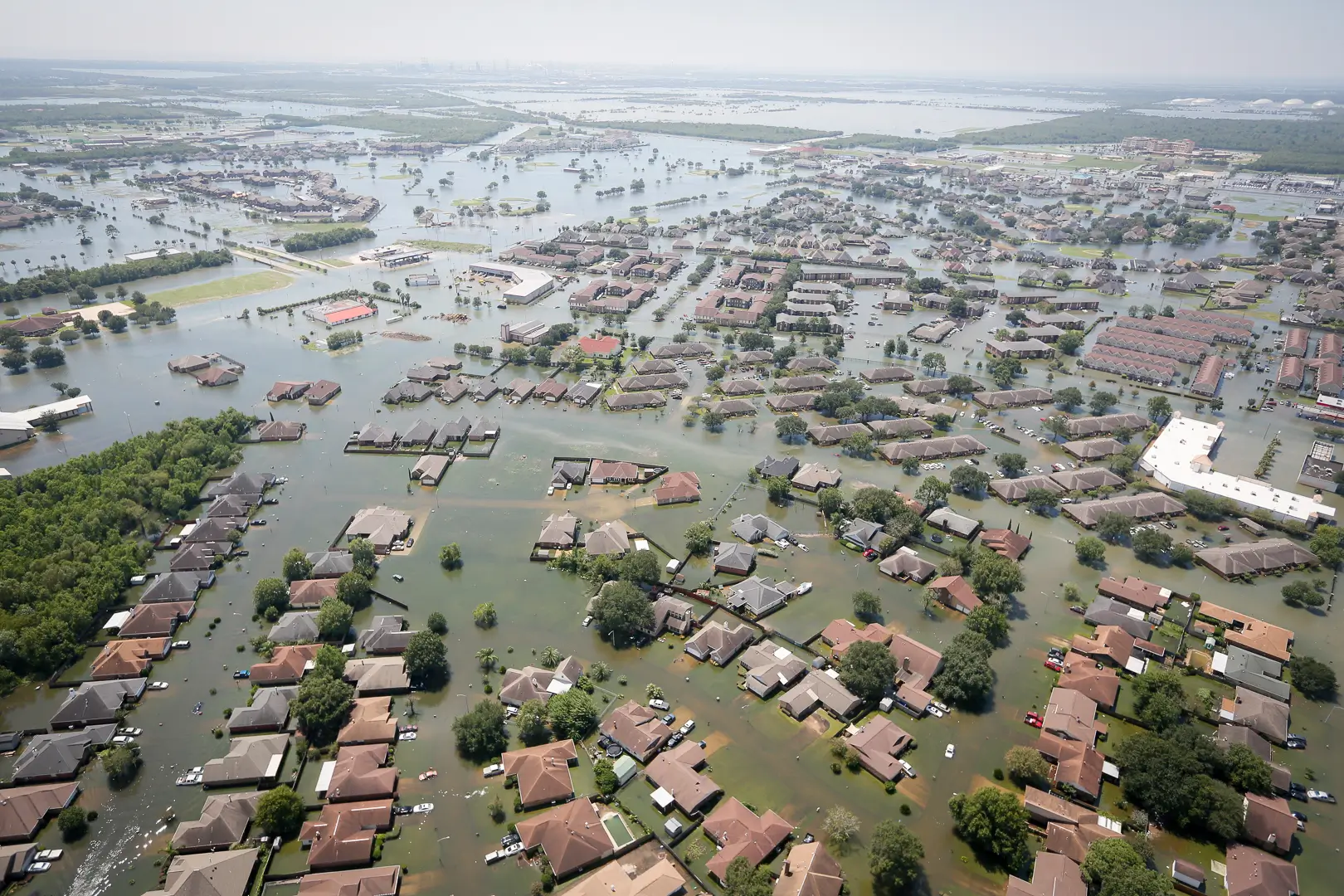
FLOOD BASICS
About Flooding
A flood can happen anywhere there is water – along streams and rivers, near the coast, around lakes, or down mountainsides.
Floods happen when water swells or flows into areas that are normally dry. This naturally occurs as water fills and drains out of a shared area.
Did You Know?
Naturally low-lying areas near water are often referred to as floodplains and are prone to flooding.

Some flooding can be good – water filling and draining out of a shared area can replenish depleted water supplies or restore nutrients in and around waterways. However, floods can also reshape, change, and destroy nearby land, environment, and structures.
Knowing how floods happen can help people plan and adopt measures to minimize the negative impacts associated with flooding.
Did You Know?
Waterways are connected. The shape and terrain of land creates areas where water naturally drains, collects, and travels from higher to lower areas. For example, snow or rain may fall in a mountain; this water will then flow down the mountainside, collecting in creeks, streams, and rivers that eventually drain into a reservoir, bay, or the ocean. This area is referred to as a watershed. There are 78 major watersheds in the continental U.S. To learn more about watersheds, visit the U.S. Geological Survey’s Water Science School.

Types of Flooding
Flooding can happen almost anywhere. There are a few common ways flooding happens.
-
Storms or heavy rain can bring large amounts of water that overwhelm or fill areas that are low lying or with poor drainage. This can happen quickly, or over a longer period.
-
Water draining out of a shared watershed system can cause downstream areas to flood. As water collects within the system and passes through low-lying areas, it expands and can engulf nearby land.
-
Water passing through areas that are naturally dry, without vegetation, or good drainage can create rapid flooding and produce mud and debris flows.
-
Coastal storms or hurricanes can bring wind and rain, temporarily pushing waves and water farther onshore. Flooding can also occur in coastal areas due to larger than normal tides.
-
Ice and snow can melt, causing larger amounts of water to quickly drain from one area to another. This water can also collect materials in its path that obstruct or divert water.
-
Flood risk management structures designed to manage water levels in a river or along a coast can be overwhelmed, break, or fail. This can result in flooding as water collects behind them, or as water is released downstream or freely into an area that is normally dry.
The most common situations that lead to flooding include large rain events, coastal storms, or the melting of snow or ice. Rain and snowfall can happen in higher areas, such as in mountains or higher ground. This water drains downhill, flooding areas along the way as well as where it collects or pools in nearby streams or rivers. Rain and snow melt can also occur in low-lying areas and pool rapidly or slowly. In coastal areas, flooding can happen because of local rain events, water draining from other areas toward the ocean, larger or abnormal tide events, or because of wind pushing ocean or bay waters onshore. Regardless of the source of flooding – it’s important for people to plan, pay attention to warnings and notices, and be safe during and after a flood.

Factors that Affect Flooding
Flooding can develop slowly or quickly. A variety of factors can influence the speed, duration, and intensity of flooding.
Shape or Terrain of the Area
The shape and terrain of land creates areas where water naturally drains, collects, and travels from higher to lower areas. Typically, water flows from high to low ground toward a larger water source like the confluence of several rivers, a bay, or the ocean. Lower-lying areas are prone to flooding and can experience more intense flooding depending on how fast water arrives, how long it takes to recede, and if additional rain in the area makes it hard for the land to absorb excess water.
Sources of Flooding
Flooding can happen when it rains, near rivers, along coasts, or near dams and levees. Flooding associated with rain or near rivers can happen quickly or over days. Localized rain events are more likely to create smaller floods, whereas areas near a river or the ocean may experience widespread flooding due to the amount of rain and duration of the event. Flooding can happen near dams or levees as water pools nearby, is released, or because of a break or failure. Water from releases is often controlled, whereas water from a break or failure is uncontrolled, fast-moving, and deep.
Amount of Water
How much and how quickly water accumulates can drastically change how flooding happens. Rain events that drop large amounts of water over a short period can cause waterways to rapidly swell and overwhelm nearby areas. This is often called flash flooding – as sudden downpours or arrival of water cause rapid, violent flooding. Flash flooding is common in urban areas where asphalt and concrete can hinder soil absorption of water causing it to flow quickly over surfaces. Longer and slower moving rain events can also flood an area over days rather than hours. Whereas little notice is available before a flash flood, slower events where water rises over time can often be predicted and allow people to plan and get to safety.

Flash Flooding Devastates Ellicott City, MD
Flooding can happen in a flash and severely damage homes, businesses, landmarks, and endanger people’s lives. On July 30, 2016, a severe thunderstorm dropped six inches of rain on Ellicott City, MD in two hours. The storm created a flash flood that severely damaged parts of town, including properties along Main Street.
Learn more Image Source: WikimediaHow Much Water Can Be Absorbed
Some water is absorbed as it passes through or collects in an area. Areas with plants and trees can also slow passing water. However, if an area has recently experienced a lot of rain, the ground may already be soaked and unable to absorb additional water. Areas with frequent fires often lack plants and trees and as a result water passes quickly across the surface toward the lowest nearby point. Flooding after wildfires can be especially dangerous, as water passing over the surface can collect materials and create mudslides. Land in areas that are naturally dry, without drainage, or with a lot of asphalt and concrete often do not absorb much water. Unabsorbed water flows over surfaces and can move and spread out more quickly.

Flood After Fire
Did you know wildfires dramatically alter the terrain and increase the risk of floods?
Learn moreDuration of Events
Slow moving storms that bring larger amounts of rain can cause water levels to rise over time. This slow rise in water can flood areas and take several days to recede. Faster systems, or sudden pulses of water into an area can be more dangerous. Fast moving water can arrive without notice, rapidly enter an area, and damage anything in its path. For example, a dam or levee breaking and allowing water to flow freely into normally dry areas can quickly envelop an area. While a fast-moving flood event can cause more danger more quickly, slow moving events also harm farmlands, properties, and communities as water sitting in areas over time damages what’s there and creates health and safety concerns for nearby people.

Hurricane Harvey
In August 2017, Hurricane Harvey wreaked havoc on the American South. The storm system dropped more than 40 inches of rain over four days as the system slowly meandered over eastern Texas and adjacent waters. The hurricane caused multiple tornadoes and unprecedented flooding, with peak accumulations of about 60 inches in Nederland, Texas. The resulting floods inundated hundreds of thousands of homes, displacing more than 30,000 people and prompting more than 17,000 rescues.
Nearby Structures
Dams, levees, channels, and other structures have been built throughout the U.S. to help divert and manage the flow of water for a variety of reasons. Many dams and levees in the U.S. are designed to manage the flow of water along a river system or coastal area. When operated together, multiple dams and levees can help manage high and low water events, as water can be stored and released from dams over time and diverted or kept away from areas using channels and levees. Having nearby dams and levees may change the frequency and intensity of flooding in an area. However, no dam or levee is risk free. Some flooding can occur near dams when water is held back and when it is released downstream. Water can flow over, through, under, or around a levee, causing localized flooding; flooding can be more intense if a dam or levee breaks or malfunctions.

Dams & Levees
Dams and levees are structural tools that can change the flow of water. This can help keep water away from shared areas. When operated as a system, dams and levees can manage water and hold it back or release it. Many communities rely upon dams and levees to reduce the frequency and intensity of flooding.
Photo: Minot, ND – June 2011, Construction crews contracted by the Army Corps of Engineers add height to a dirt levee, to hold back the Souris River from flooding Minot. Photo from FEMA.
Waterway Obstructions
Materials in or near waterways can obstruct the natural flow and path of waters. For example, larger bridges, piers, concrete structures, or buildings can influence how high water flows through an area. Additionally, flood waters often carry materials with them, which can range from trees and branches, to roofing or building materials. Enough material can collect and obstruct waterflow, resulting in water pushing farther onto riverbanks or coastline, or pooling behind and around the obstruction.
